#katsuyama
Note

Hello! i saw your kimono drawing guide, and i have some questions.
I saw this art and was wondering about a few things:
what is the tied knot& tassel things on the sleeves for?
and, what hairstyle is the lady wearing?
If you know, please tell me!
If you don't know, could it be possible to direct me to someone that might? Thank you for taking the time to answer, if you're able! Have a lovely night/day!
Hi and thank you for your question :) The ukiyoe you are sharing is by Utagawa Kunisada and titled Genji rokujo no hana (源氏六條の花), or "Cherry Blossoms at Genji's Rokujô Mansion". It is part of a three prints set:

It depicts an imaginary scenery from The tale of Genji, and the young lady playing with her pet cat is the princess Onna San no Miya.
Characters are not shown wearing period accurate clothes (from Heian era), but luscious Edo period attires. Because of her rank, the young princess is wearing what Edo princesses would, especially the trademark hairstyle named fukiya 吹輪.
You'll find below a translation from a costume photobook I did a while ago. Note the big bridge style front hairpin, and the drum like one in the back. Princesses from the buke (samurai class) would also have dangling locks called aikyôge (I also found the term okurege), but I am not sure kuge princesses (noble class) wore them too.

There is a whole dispute about this hairstyle, as we are not actually sure it was worn as such by actual princesses. This style may have in fact started as a somehow cliché bunraku/kabuki costume used to depict princesses (think a bit like Western Cinderella-types princess gowns). Nowadays, it is found only as a theater style, or worn by Maiko during Setsubun season.
For comparison, here is character Shizuka Gozen from kabuki play Yoshitsune Senbon Zakura:

As for the dangling cords, I covered those in a past ask about kamuro that you can find here (part 1 / part 2). TL:DR: I am still not sure what is the exact name for those decorations (kazari himo? sode no himo?).
But their use is pretty much linked to 3 things:
1) luck + protection (knots have auspicous meanings),
2) reinforcing weak points of garnment (here: sleeves wrist opening)
3) cuteness impact, as much like furisode (long sleeves kimono) those dangling ribbons were mostly seen on girls/young unmarried ladies by the Edo period
All the design elements chosen by Utagawa Kunisada for his Onna San no Miya stress own young and carefree she is still (which considering her narrative arc is in fact a bit sad... like all Genji Monogatari stories). BUT: bonus points for pet cat!
Hope that helps :)
#japan#kimono#ask#fashion history#art history#ukiyoe#The tale of Genji#genji monogatari#Utagawa Kunisada#hime#princess#onna San no Miya#nihongami#japanese hairstyle#fukiya#katsuyama#kazari himo#sode no himo#dangling ribbon#kamuro#kumihimo#ribbon#cord
485 notes
·
View notes
Photo

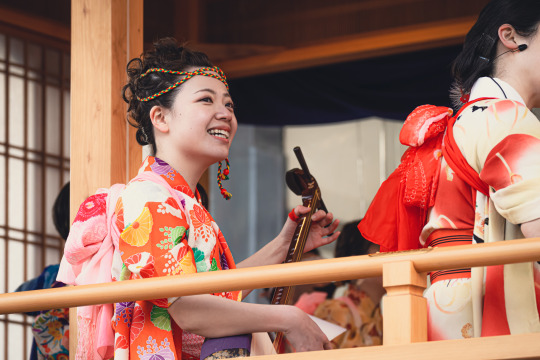



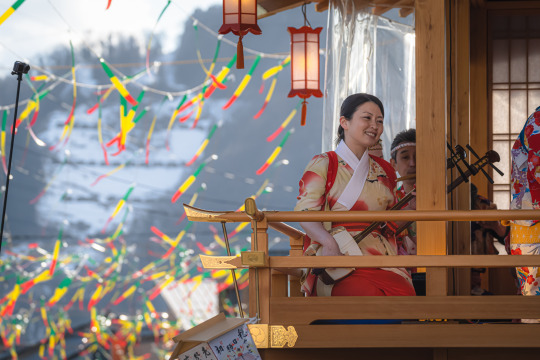

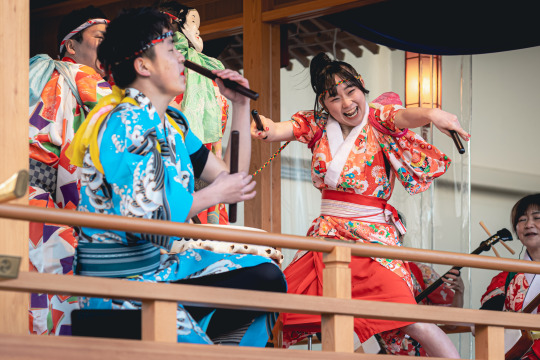


勝山左義長まつり Katsuyama Sagicho Festival
photo: @EiichiYoshioka
#photography#photographer#photographers on tumblr#original photographers#artists on tumblr#lensblr#lensculture#Japan#Japanese festival#festival#fukui#katsuyama
36 notes
·
View notes
Text

ma_japaaan.travel.guide
Echizen Daibutsu: The Tallest Seated Buddha Statue With The Shortest History
Japan’s Taishizan Seidaiji Temple in Katsuyama hosts Echizen Daibutsu (Echizen Great Buddha), one of the tallest seated statues of Buddha. It was based on the seated statue of Ryumon Hosenji Temple in China and was built on May 28, 1987.
With a height of 17 meters, 2 meters taller than the Great Buddha of Nara, it is the tallest seated Buddha statue in Japan. Although Echizen Daibutsu is taller than the other seated statues, it is not as famous as them because of its short history, making it the tallest and the youngest seated Buddha statue in Japan.

geograko
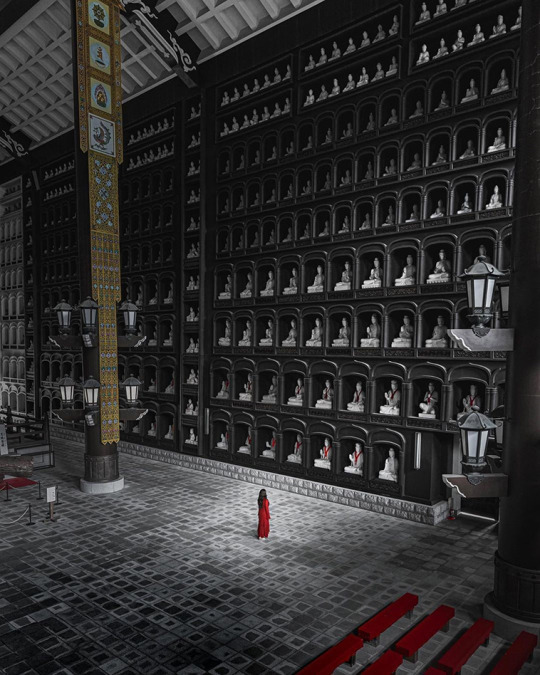
japonalternativo
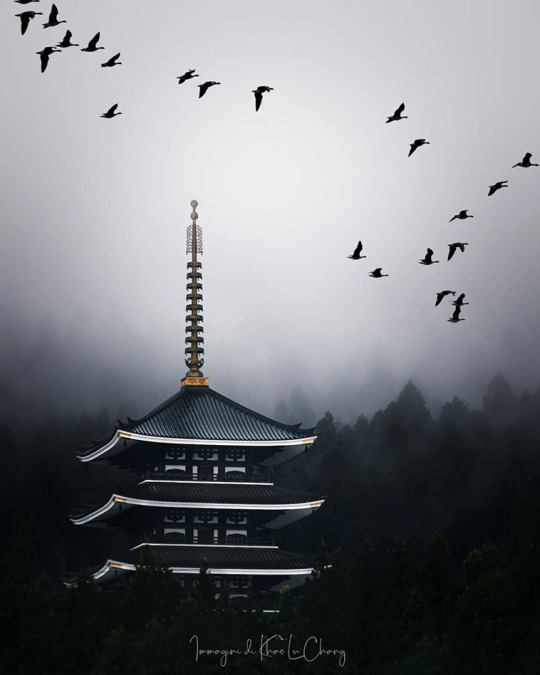
bbkaorun

_mi.j14
#japan travel guide#echizen daibutsu#seated buddha#statue#japan#katsuyama#echizen great buddha#ryumon hosenji temple#china#buddha#religion#culture
3 notes
·
View notes
Text
Echizen Daibutsu, Katsuyama, Fukui, Japan 🇯🇵 !.
#Echizen Daibutsu#Katsuyama#Fukui#Japan 🇯🇵 !.#Japan#Temple#Magic#Village#Sky#Travel#Voyage#Landscape#downfall#downfalldestiny
23 notes
·
View notes
Text
Aroma-unique beginners should drink with an open mind.
Sake alone in the dust today!
Flat in a popular liquor store in Ikebukuro.
I looked around and it looked good. I had a gut feeling.
Katsuyama Tokubetsujunmai En
Katsuyama Tokubetsujunmai En Taste evaluation
Today’s snack
Katsuyama Tokubetsujunmai En
This label looks luxurious and I picked it up.
Without any previous information, I wondered what it tasted like.
Wine-like…

View On WordPress
#brewery#crazy#English#fresh#How to#Japan#Japanese#Japanesesake#Katsuyama#liqueur#miyagi#peach#population#recommended#sushi#Tokyo#tourism#tourists#travel#travels#yummy#勝山、宮崎、
2 notes
·
View notes
Text

Region de Katsuyama (ca.1929-1932) | Hiroaki Takahashi | rawpixel (The Los Angeles County Museum of Art)
3 notes
·
View notes
Text


#October#u2#lyrics#bono#autumn#maple leaves#castle#poetry#quote#love#aesthetic#my photos#Katsuyama#japan#travel#bts#bangtan sonyeondan#trivia love#love yourself#rm#Kim namjoon
0 notes
Photo

福井県勝山市のスカーフ&ライフスタイルショップ「nimbus」が、下記デザイン系ウェブサイトに掲載頂きました。 ご覧頂ければ幸いです ■designboom https://www.designboom.com/architecture/floating-goods-shop-arata-isozaki-original-concrete-building-japan-hiroshi-yamada-toshitaka-shimizu-12-11-2022/ ■ArchDairy https://www.archdaily.com/993575/nimbus-cafe-and-lifestyle-shop-loha-plus-fukui-university-of-technology?utm_source=offices&utm_medium=email&utm_campaign=just-published ■Divisare https://divisare.com/projects/471082-loha-laboratory-of-hiroshi-yamada-architects-kyohei-noda-nimbus LoHA http://loha-fukui.com #architecture #renovation #fukui #katsuyama #nimbus https://www.instagram.com/p/CmGpxhgyhbk/?igshid=NGJjMDIxMWI=
0 notes
Text
Japanese comedian Moody Katsuyama posts another Yakuza-esque photo, fans go wild
YouTube – shimamiya
Comedian Moody Katsuyama posts another funny photo in the spirit of a popular video game series, Yakuza, causing quite an uproar among fans.
As posted on Twitter, Moody Katsuyama shares yet another photo in the spirit of the Yakuza video game series.
龍が如くサブストーリー「挟まって動けなくなったムード歌謡歌手」 #龍が如く pic.twitter.com/oukzlKjsGP— ムーディ勝山 (@katsuyama0611) April 16, 2024
Yakuza Side Story –…

View On WordPress
0 notes
Text
Thanks to @plokool and @killdeercheer for helping me put this together in a way that wasn't too usa or europe biased ^_^
237 notes
·
View notes
Text
―୨୧⋆ ˚ 𝐇𝐚𝐢𝐤𝐲𝐮!!
ʚ untrained ɞ
notes: your boys nerd out

(づ ᴗ _ᴗ)づ♡⠀⠀⠀⠀⠀˗ˏˋ ꒰ you two are stargazing. ꒱ ˎˊ˗
It was just another Monday, except instead of staying indoors, Toru had taken you to the park at night. He found a perfect spot in the grass and spread a blanket on the ground, where you two now lay and stare up into the sky. There's a bright smile on his face as he lays next to you, enjoying your company. This was a nice change of pace compared to the pressures of the court.
Toru points up at one of the constellations in the sky and says, "There's Orion's Belt."

(づ ᴗ _ᴗ)づ♡⠀⠀⠀˗ˏˋ ꒰ a date at the dinosaur museum. ꒱ ˎˊ˗
Dinosaurs. You and Kei traveled from Miyagi all the way to Fukui just so that you two would be able to visit the Dinosaur Museum in Katsuyama. After seeing the dinosaur figurines in his room, you'd carefully planned this outing a few weeks ago. You left Miyagi pretty early, considering the museum closes at 5 p.m.
Kei lets out a yawn and ruffles your hair as you two enter the building. "Thanks for inviting me," he says.

⠀⠀⠀⠀Masterlist ๋࣭ ⭑
#oikawa toru x reader#oikawa x reader#oikawa scenarios#tsukishima kei x reader#tsukishima x reader#tsukishima scenarios#hq x reader#haikyu scenarios#character ai#character ai bot#bots by marny#giigil
92 notes
·
View notes
Text

Nice comparative chart by nature guide Kumasuke, showing the size differences between heron/egret species found commonly in Japan:
Daisagi: great white heron or great egret. Note how the blue-green gape going past the eye
Chûsagi: intermediate egret or yellow-billed egret. Note the yellow gape stopping under the eye
Kosagi: little egret. Note the yellow feet + the fluffy crown
If I remember well, most egret/heron species slightly change coloring and/or grow fluffy feathers during mating season. Those feathers were once used for kanzashi hairpins, a remnant are the katsuyama kanzashi worn by maiko for Gion matsuri (see the butterflies faint "antennas"?):
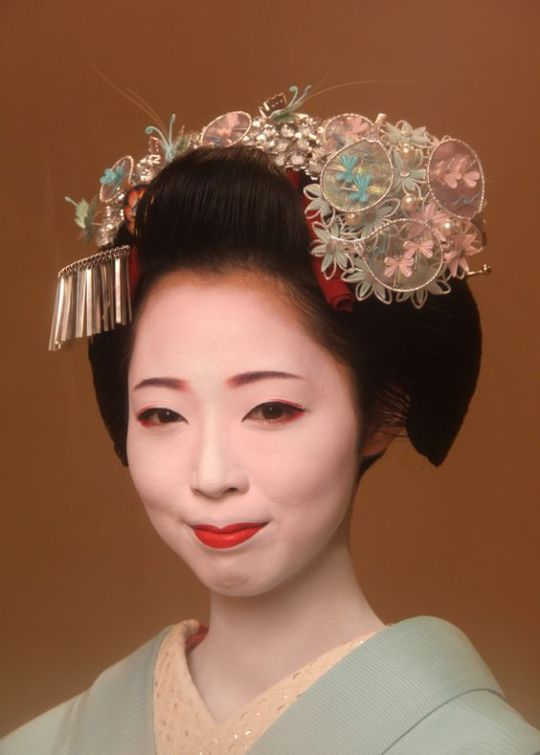
Nowadays egret are protected and feathers still in use are from ancient stocks.
Egret species are often virtually impossible to tell apart in Japanese patterns. On this blog, I simply tag any of those birds under "sagi" :)
#japan#ressources#chart#reference#bird#sagi#heron#egret#daisagi#chuusagi#kosagi#great white heron#great egret#intermediate egret#yellow bill egret#little egret#kanzashi#egret feathers#gion matsuri#maiko kanzashi
121 notes
·
View notes
Video
youtube
勝山左義長まつり Katsuyama Sagicho Matsuri 2023 | Japanese Festival | Sony aS7III
YouTube: @EiichiYoshioka
#vlog#movie#video#cinema#cimeatic vlog#cinematic video#cinematic short film#festival#fukui#katsuyama#tradition#drum
13 notes
·
View notes
Text
The look of... VIII: Shimizu 清水

Historical context
The first official date in the history of Shimizu Geigi is 1872, when "Machi Geisha" (まち芸者), who were distinct from "Kaku Geisha" (廓芸者), appeared. A Kenban (registry office) was established in 1877. At that time, Machi Geisha and Kaku Geisha combined were around twenty people. Only ten years later, in 1887, their number had increased to 100. The number of Geigi continued to grow.
In 1938, the number of Geigi was around 260, and they were highly regarded nationwide for their skills in art and behaviour. In 1951, a "Shimizu Geigi school" (清水芸妓学校) was opened, around 150 Geigi attending the event.

In the 1970's, Japan's period of economic growth started tapering off, interest in traditional arts dwindeled, which resulted in less work opportunities for Geigi and the number of Ryotei decreasing. In response to this, local business leaders and Shimizu Geigi started an organisation to help fostering new Geigi (Seibikai 清美会).
By 1985, their number had decreased to thirteen and the Kenban closed. In 1991, local businessmen and Geigi formed a different company (Seibi Co. 清美(株)), which worked as employer for Geigi. Due to a bad economic environment, Shimizu Odori (清水をどり) was last held in 1998, Seibi Co. was dissolved in 2004, and Haru no mai (春の舞) was discontinued in 2009. As a result of this, some of Seibi's employees became independent Geigi.
Allegedly, the number of Geigi hit rock bottom in 2011 with only two remaining. However, in 2012, around eleven Geigi worked in Shimizu. Since then, the city had a steady stream of Geigi coming and going again. At the end of this year, 2023, there are ten Geigi working in the city.
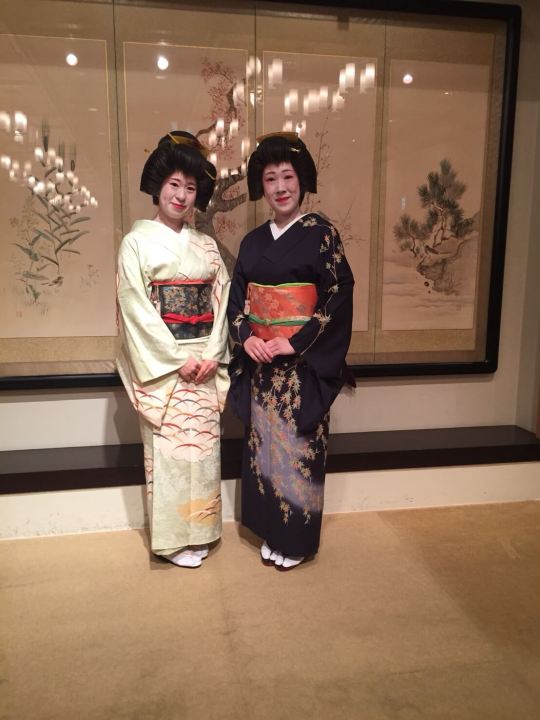
The look of Shimizu Geiko
Local Term: Geigi 芸妓
※ Hairstyle: Taka shimada, Tsubushi shimada
※ Kanzashi: Kushi, Maezashi, bekko kogai, ear of rice in the new year period
※ Kimono: Homongi, Kuromontsuki Hikizuri
※ Haneri: white
※ Obi: Taiko musubi
※ Obiage: green, pink, white, red
※ Obijime: flat, 1 knot
※ Footwear: Zori

Casual look
※ Hairstyle: Yohatsu
※ Kanzashi: none
※ Kimono: Homongi, rarely Komon
※ Haneri: white
※ Obi: Taiko musubi
※ Obiage: white, pink
※ Footwear: Zori

The look of Shimizu Maiko
Local term: Shinjin Geigi 新人芸妓
※ Hairstyle: Momoware Katsura, sometimes real hair styled (shin nihongami)
※ Kanzashi: seasonal and non-seasonal Hanakanzashi, Katsuyama, maezashi, Shidare in all age groups
※ Kimono: Furisode with shoulder tucks or no tucks at all
※ Eri: white with white embroidery, plain white, white with multicolour embroidery, other colours possible especially during summer months
※ Obi: Koken musubi
※ Obiage: flat, mostly red/silver, red/white shibori, other colours also possible (green/beige/light blue)
※ Obijime: flat or round with 1-4 knots. No obidome
※ Footwear: Zôri


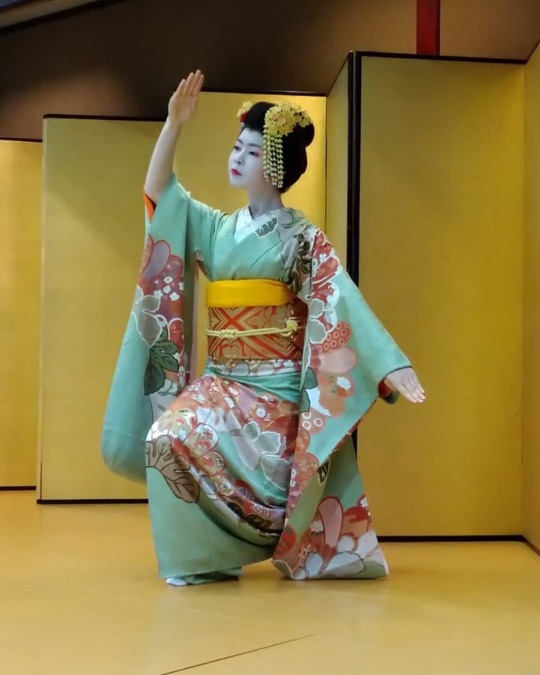

Notes
Shimizu was merged with Shizuoka in 2003. Shimizu Geigi and other traditional arts performers are backed by 静岡伝統芸能振興 Shizuoka dentô geinô Shinkô-kai/Shizuoka traditional performing arts promotion association, which is the successor to Seibikai. You might notice I didn't start this post with a historical b/w photo. There are some old photos on the Shizuoka Dentogeino homepage, but they are the size of a postal stamp. And that's it. I feel let down. No chance to explore the historical style of Shimizu.
Anyways. "The look of Shimizu/Shizuoka" was requested by @geimaiko. The layout of this post is based on geimaiko's own. Also... geimaiko originally started these series. If you liked this post, you should go and thank her, because without her, there would be no "the look of..." ;)
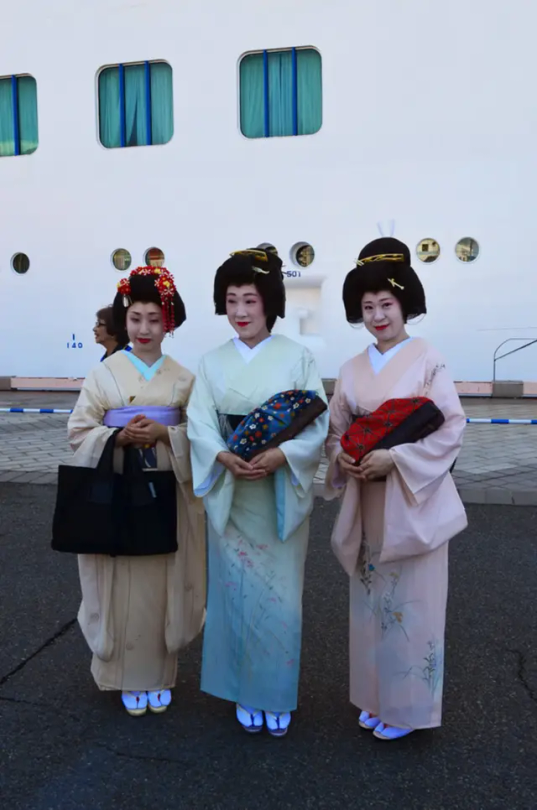

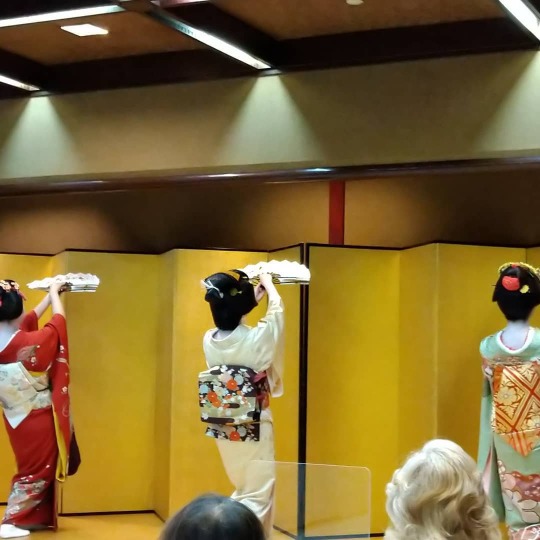
Sources
https://www.shizuoka-dentogeino.jp/geigi/shizuoka_history/, https://www.shizuoka-dentogeino.jp/geigi/shimizu_history/, http://www.shimizu-port.jp/geigi.html, https://www.nikkei.com/article/DGXNZO41971500Z20C12A5L61000/ (headline and preview only), https://www.youtube.com/@shizuokadentogeino/videos
Pictures: Komachi May 17, Makoto May 17, Komachi+Makoto Oct 17 (sources nowhere to be found), Sakurako+Fukutaro Apr 22, Kikuno+Umeka Nov 14, Iroha Jun 20, Iroha Oct 20, Fukutaro Oct 20, Ichiryo+Komachi+Makoto ~2016, Komachi+Sakurako Apr 18, Fukutaro+Sakurako Oct 18, Iroha+Fukutaro+Sakurako Oct 20
#mg#geisha#geiko#maiko#hangyoku#geigi#shizuoka#kimono#komachi#makoto#sakurako#fukutaro#kikuno#umeka#iroha
48 notes
·
View notes
Text

Takahashi Shōtei (高橋松亭), b. Takahashi Hiroaki (1871 - 1945), Katsuyama Neighborhood, ca. 1929-32, print in high resolution. Original from The Los Angeles County Museum of Art. Digitally enhanced by rawpixel.
52 notes
·
View notes
